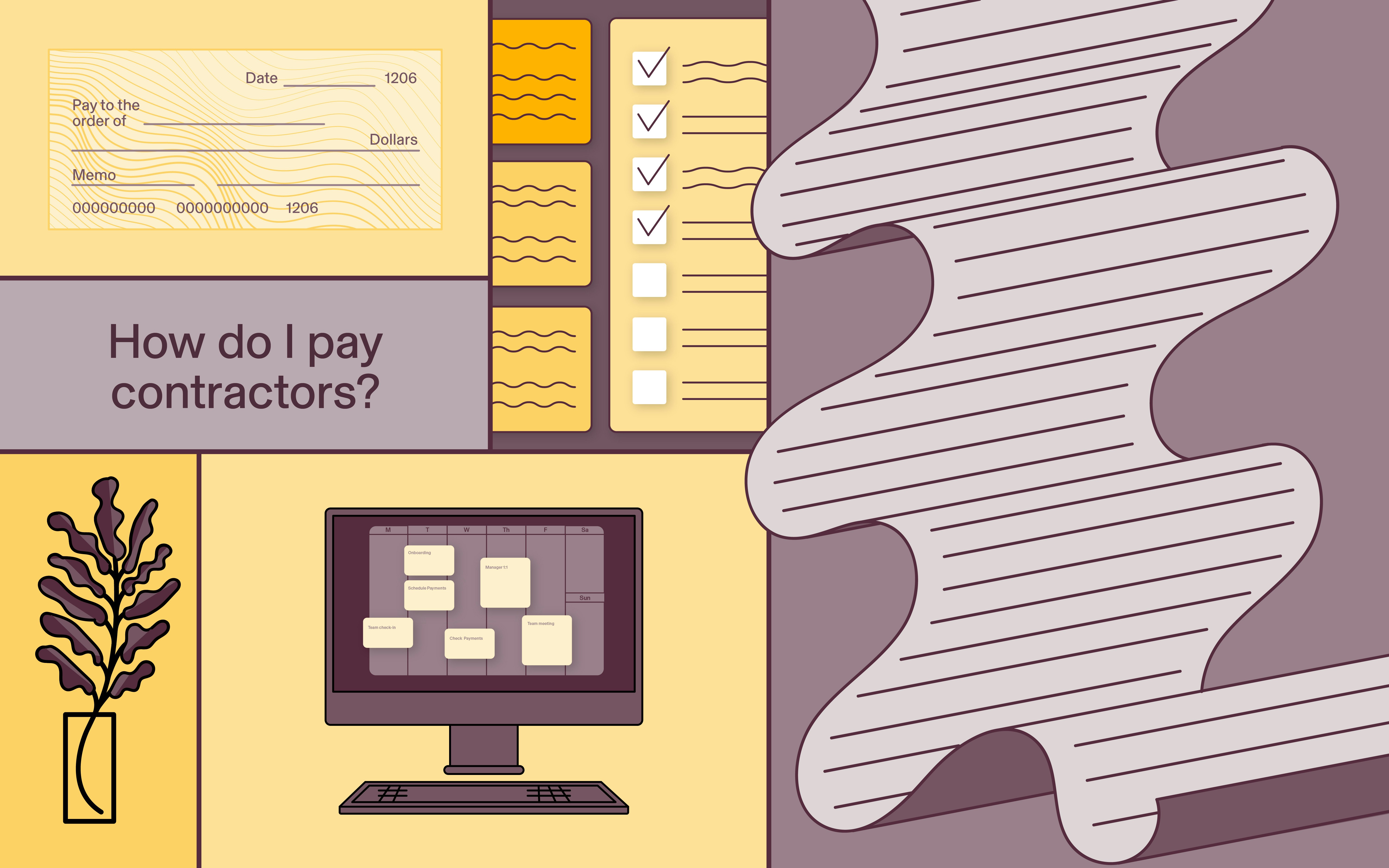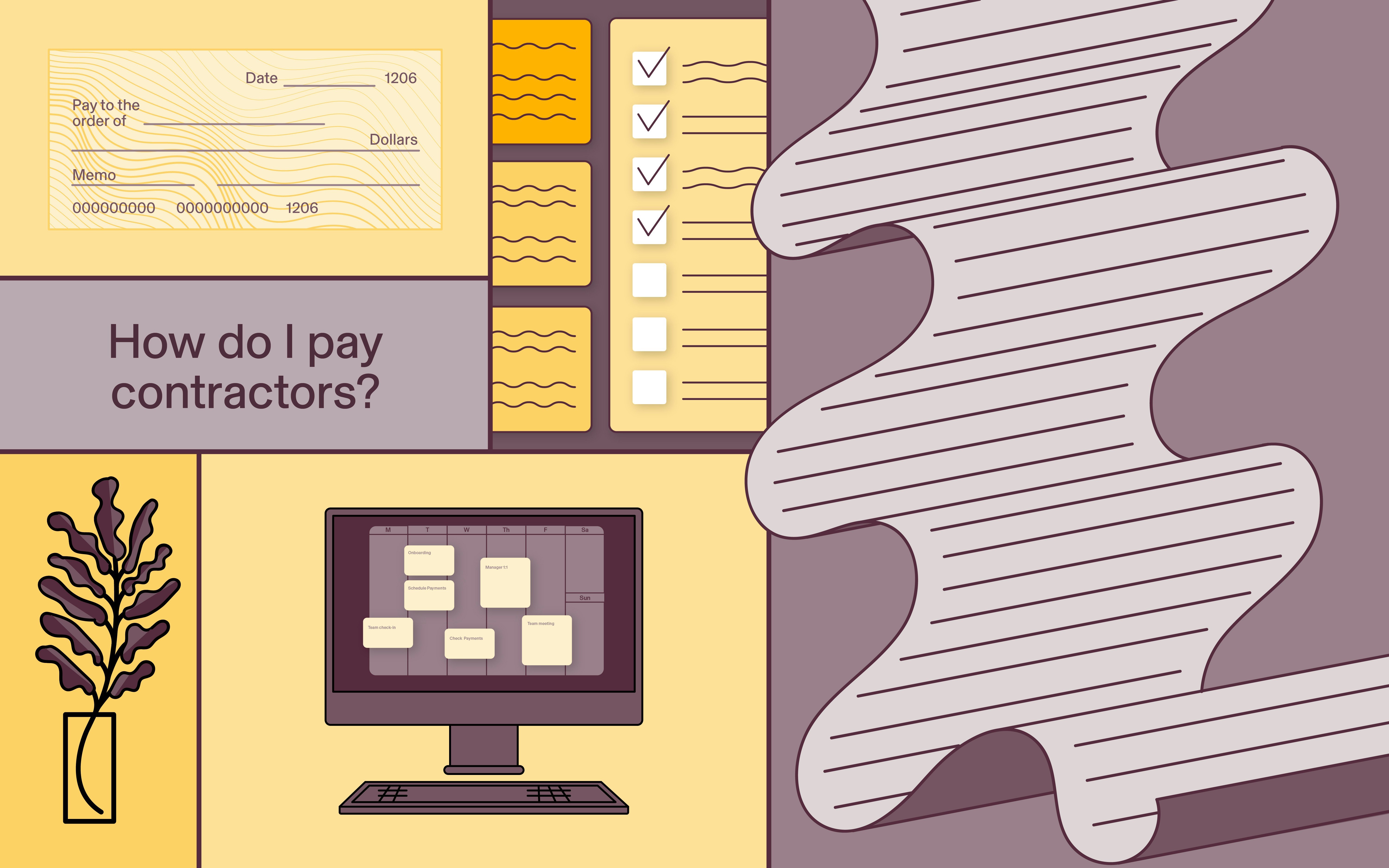Understanding 1099 for foreign contractors: what employers need to know

Sandra in São Paulo is the backbone of your marketing team. Quick, reliable, and easy to work with—what would you do without her? Then tax season rolls around, and you’re staring at a blank Form 1099-NEC, wondering if you’re supposed to send it. And, if not, what do you actually need to do to keep things above board for both your business and Sandra?
If you’re stuck at the intersection of international contractors and U.S. tax rules, we’ve got you covered. We’ll walk through when you need a Form 1099-NEC (and when you don’t), what forms to collect, how to pay foreign contractors the right way, and how to stay compliant without overcomplicating things. If you’re scaling across borders, understanding globalization and how it shapes HR procedures is critical.
Do you need to file Form 1099 for a foreign contractor?
No, you don’t need to file a Form 1099 for a foreign independent contractor, even if you paid them more than $600. That’s because Form 1099-NEC only applies to what the IRS calls “U.S. persons,” which means Americans and green card holders working abroad.
If your contractor doesn’t fall into one of these categories, and they provide services entirely outside of the U.S., Form 1099 isn’t required. Instead, you’ll collect either a Form W-8BEN or a Form W-8BEN-E to document their foreign status.
Do I need to file Form 1099 for a foreign contractor doing work inside the U.S.?
When the contractor is a non-resident foreign national doing work inside the U.S., you still won’t use a Form 1099. Instead, you’ll withhold taxes and report payment on a Form 1042-S. If the contractor’s home country has a tax treaty with the United States, they’ll need to submit Form 8233 to the IRS to adjust the withholding amount.
Form 1099-NEC vs. 1099-MISC
So, when do you use Form 1099? When the contractor is a “U.S. person” per the IRS, and you’ve paid them more than $600. That’s the case no matter where the contractor provides services.
Example: Alex and Morgan are American citizens working with Big Co. as freelance copywriters. Alex lives in London, and Morgan lives in New York City. Big Co. issues both contractors a Form 1099-NEC for the tax year.
Be aware that the 1099 comes in two flavors: the 1099-NEC covers payments made fr non-employee compensation, while the 1099-MISC covers payments for rent, utilities, legal settlements, and other “miscellaneous” payments. For contractor payments, use the Form 1099-NEC.
What tax forms are needed if you hire a foreign contractor?
Hiring foreign independent contractors often means dealing with a whole new set of tax forms than those required for U.S.-based workers. These forms help you clarify a contractor’s tax status, document any treaty benefits, and help you stay compliant with U.S. reporting requirements.
Form W-8BEN & Form W-8BEN-E
These forms certify that your contractor is a foreign person or entity and not subject to U.S. tax reporting for work done outside the country. Individuals use the Form W-8BEN, and companies complete the Form W-8BEN-E. You don’t need to file this form with the IRS, but you do need to keep a copy on file for three years.
Example: Jaime, a Spanish national living in Barcelona, does freelance graphic design for Acme Co., an American company. Acme Co. collects a Form W-8BEN from Jaime and uploads a copy to its international contractor management platform.
Form 8233
When a work-authorized foreign national who lives abroad performs services in the U.S., your business should withhold taxes, typically at a rate of 30%. In cases where the contractor’s home country has a tax treaty with the U.S., however, filing Form 8233 with the IRS ensures reduced withholding at the proper rate.
Example: Ren, a Japanese software developer with a valid B-1 Visa, travels to the U.S. for a month-long consulting project. Ren submits a Form 8233 to qualify for reduced withholding under the U.S.-Japan tax treaty.
Form 1042-S
Form 1042-S reports payments to work-authorized foreign nationals for services performed inside the United States when no treaty exemption is claimed or exists. It’s filed with the IRS and a copy provided to the contractor.
Example: Lina, a Colombian business consultant, works onsite in New York for two weeks with a client. Because no treaty exemption applies, Acme Co. withholds 30% of the invoiced amount and files Form 1042-S.
Local country tax documentation
Depending on local law, you may need to support your international contractors with forms and records to include in their tax filings. While the IRS and other American regulators don’t require this, it may come up during onboarding or as part of your contractor agreement.
Example: Samir, based in Bangalore, asks Acme Co. to provide a detailed record of all payments made to his company to include with his income report to local tax authorities.
Form 1099 deadlines & penalties
If you are required to issue a Form 1099 to a U.S. citizen or a green card holder working abroad, remember that the IRS takes filing deadlines seriously. Even small delays or minor mistakes in details can lead to penalties, especially if they lead to difficulties for the contractors who rely on those forms for their own tax returns.
The deadline for providing both your contractor and the IRS with an up-to-date Form 1099 is January 31. Miss the date or file incorrectly, and the IRS may assess a penalty between $60 and $330 per form, depending on the delay. Skip it entirely, and you’re looking at $660 per form minimum, and there’s no upper limit.
How to pay foreign independent contractors
Compensating your foreign independent contractors goes beyond picking a reliable payment method. To stay compliant, you’ll need to stay on top of documentation and tax reporting. And that’s before you receive the first invoice.
Step 1: Confirm legal status and collect tax forms.
Start by confirming whether the contractor qualifies as “foreign” in the eyes of the IRS. If they’re not a U.S. citizen or a green card holder and working outside the U.S., collect a W-8BEN or W-8BEN-E and keep it on file.
Step 2: Determine your tax obligations.
If your foreign contractor also holds U.S. work authorization and sometimes performs services for you inside American borders, check to see whether you need to withhold taxes or report the payment on Form 1042-S. A Form 8233 and a tax treaty can reduce or eliminate withholding in some cases, but you need that paperwork in place first.
Step 3: Use a compliant payment method.
Selecting the best payment method means balancing two priorities: compliance and professionalism. International workforce management tools that include global payroll software give you traceability and ensure your team receives on-time payments.
Step 4: Record and store all payment details.
Log each payment in your accounting system, attach supporting documents like invoices, and make sure the contractor’s payment terms match what’s in your contractor’s agreement. Even if you’re not filing a Form 1099, you’ll need this if the IRS ever asks.
Pros and cons of hiring international contractors
The benefits of going global—from access to expanded skills to greater flexibility—can be just what you need to move your business to the next level. Before you start building a global team, however, make sure you’re also prepared to handle the operational and compliance challenges that come with it.
Pros
Working with contractors across borders can unlock more than just convenience. It’s a gateway to an expanded labor market and extended strategic reach.
- Access to global talent and skills. Working with contractors in different countries connects you with specialized talent you might not find in the local labor market.
- Flexibility and scalability. Because you’re not locked into long-term employment contracts, hiring international contractors can be a cost-effective way to execute time-bound projects or initiatives.
- 24/7 operations. Distributed teams working across time zones can shorten turnaround times and support round-the-clock operations.
Cons
Some of the most common challenges in cross-border hiring don’t crop up until after you’ve signed the contract. That’s when payment problems, compliance risks, and miscommunications surface.
- Compliance complexity. Working with global contractors requires you to understand tax laws, collect the right tax forms, and learn the ins and outs of local labor law to avoid misclassifying workers.
- Payment and currency risks. Cross-border payments can be subject to exchange rate shifts, bank fees, or delays, all of which can impact relationships with contractors.
- Communication and cultural barriers. Different time zones, communication styles, or expectations around workflows can lead to misunderstandings about how to tackle projects or address challenges.

Our FREE Worker Classification Analyzer lets you know if you're risking fines, penalties, and more
Try it todayHow to hire international contractors
Hiring foreign independent contractors can be a smart move for your team, but it does come with some unique rules. Rules that the IRS expects you to follow, even if you won’t withhold taxes or file any forms.
Verify legal requirements
The first step is understanding whether your contractor is truly international. That means they’re not a U.S. citizen, green card holder, or U.S.-registered business, and they’re doing work outside the U.S.
Collect proper tax forms
For truly international contractors, you’ll typically need a Form W-8BEN or Form W-8BEN-E, depending on whether you’re working with an individual or a business. These forms tell the IRS that your contractor isn’t subject to U.S. tax reporting.
Evaluate your tax obligations
If the contractor performs services exclusively abroad, you likely don’t need to withhold any employment taxes. If the contractor does some work for you inside the U.S., however, it may trigger some additional requirements, like a Form 8233 or a Form 1042-S.
Choose compliant payment methods
Stick to payment methods that leave a clear paper trail. Options like international wire transfers, PayPal business payments, and international payroll platforms are probably your best bet. Avoid cash, money transfer apps, or anything that might blur the line between business and personal spending when paying international contractors.
Maintain detailed records
Save all tax forms, contractor agreements, and invoices. You need to develop a clear record of the working relationship, including payment terms and evidence that the contractor wasn’t an employee. The IRS also expects you to keep W-8BEN forms for at least three years following the final payment to a contractor.
How Rippling simplifies paying & managing foreign contractors
With Rippling, you can onboard global contractors in 185+ countries within minutes. They can sign their contractor agreement, enter payroll details, get a company email address, and more—all in one workflow. Rippling’s global payroll software allows you to process international and domestic payments in a single pay run.
And when you’re ready to convert your international contractors into employees? Rippling’s onboarding workflow handles everything from employment agreements to benefits enrollment to assigning required trainings, so your new employee can hit the ground running on day one.
With Rippling, you can:
- Keep your historical employee data intact. With other EOR providers, transitioning a contractor into an EOR employee requires firing and rehiring them and setting them up in your systems from scratch. But with Rippling’s EOR services, you can transition workers between employment models using one system for your entire workforce, so their documents, time tracking, expenses, and more will all be intact.
- Manage everything in one place. Managing a global workforce goes beyond just hiring and paying—it’s headcount planning, time and attendance, learning and performance management, device ordering, app provisioning, and more. You may not need all these tools now, but as you scale, you will. Unlike other providers that only offer native EOR and HRIS or rely on clunky integrations for these other tools, slowing you down and requiring you to reenter information between systems constantly, Rippling natively built a whole suite of tools to meet your long-term needs.
1099 FAQs
Do you need to withhold taxes from foreign contractors?
If your foreign contractors live and work outside of the U.S., you typically won’t be responsible for withholding any taxes. If, on the other hand, they perform services for you inside the United States and can’t claim a tax treaty benefit, you may need to withhold up to 30% of their income and file a Form 1042-S.
Do you need a W9 for international contractors?
No, you don’t need to issue a Form W-9 for international contractors. This form is only for U.S.-based individuals and entities, like American citizens and work-authorized foreign nationals or companies organized in the U.S. For foreign contractors, the correct form is the W-8BEN or W-8BEN-E, depending on whether you’re working with an individual or a business.
What is the IRS form for foreign independent contractors?
The correct IRS forms for foreign independent contractors working outside the U.S. are Form W-8BEN for individuals and Form W-8BEN-E for companies. These forms certify the contractor’s foreign status and help you avoid unnecessary tax withholding or Form 1099 filing. You don’t need to send these to the IRS—just keep them on file for three years. If you’ve hired a work-authorized foreign national as an independent contractor inside the U.S., you’ll generally issue a Form 1099.
This blog is based on information available to Rippling as of July 9, 2025.
Disclaimer: Rippling and its affiliates do not provide tax, accounting, or legal advice. This material has been prepared for informational purposes only, and is not intended to provide or be relied on for tax, accounting, or legal advice. You should consult your own tax, accounting, and legal advisors before engaging in any related activities or transactions.










